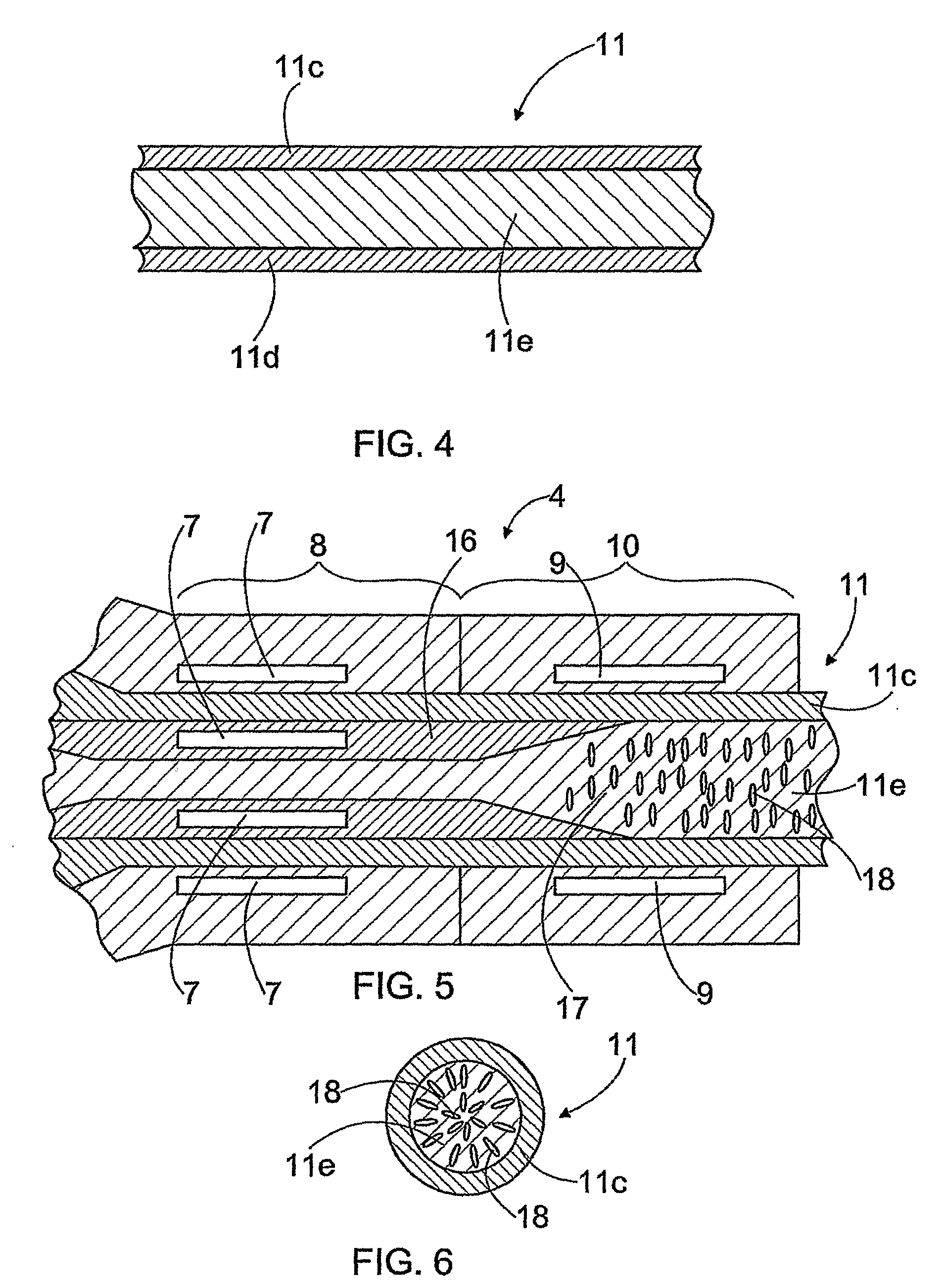Method for Making a Composite Product, and a Composite Product
a composite product and product technology, applied in the field of composite product making, can solve the problems of reducing yield, affecting process management, and bubbling of manufactured products, and achieve the effects of improving heat resistance, reasonable cross-linking time, and increasing product strength
- Summary
- Abstract
- Description
- Claims
- Application Information
AI Technical Summary
Benefits of technology
Problems solved by technology
Method used
Image
Examples
Embodiment Construction
[0023]FIG. 1 shows a part of an extruder at the vicinity of its nozzle. The extruder comprises an inner stator 1 and a tapering conical rotor 2 arranged outside the inner stator. Outside the rotor 3 there is provided a tapering conical outer stator 3. Between the rotor 2 and the stators 1 and 3 there is a feed gap, in which the material to be extruded flows when the rotor 2 is rotated.
[0024]For the sake of clarity, FIG. 1 does not show the devices for rotating the rotor 2 or the material feed devices for feeding the material to be extruded to the inside and the outside of the rotor 2. Further, also for the sake of clarity, FIG. 1 does not show the grooves provided in the stators 1 and 3 and / or the rotor 2 for conveying the material out of the apparatus.
[0025]By rotating the rotor 2 the material is supplied through the feed gaps to the nozzle 4.
[0026]The extruder is provided with heating means 5 arranged at the distal end of the rotor 2 in the stators 1 and 2. The heating means 5 may...
PUM
| Property | Measurement | Unit |
|---|---|---|
| travel time | aaaaa | aaaaa |
| temperature | aaaaa | aaaaa |
| temperature | aaaaa | aaaaa |
Abstract
Description
Claims
Application Information
 Login to View More
Login to View More - R&D
- Intellectual Property
- Life Sciences
- Materials
- Tech Scout
- Unparalleled Data Quality
- Higher Quality Content
- 60% Fewer Hallucinations
Browse by: Latest US Patents, China's latest patents, Technical Efficacy Thesaurus, Application Domain, Technology Topic, Popular Technical Reports.
© 2025 PatSnap. All rights reserved.Legal|Privacy policy|Modern Slavery Act Transparency Statement|Sitemap|About US| Contact US: help@patsnap.com



